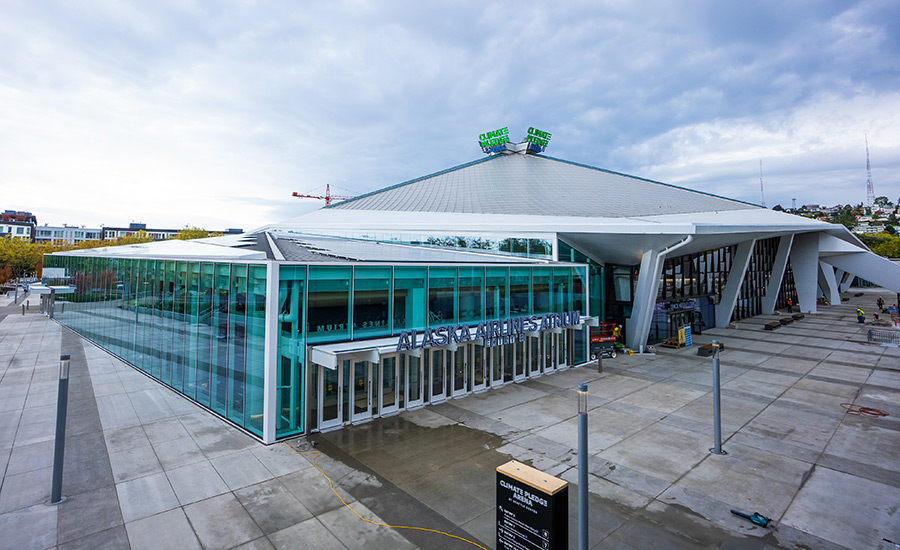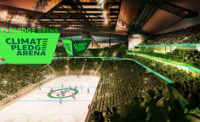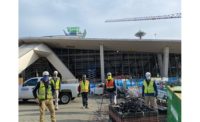The team for the $1.15-billion rebuild of Seattle’s iconic Key Arena, now named Climate Pledge Arena, thought they could breathe a collective sigh of relief at the end of last year. They had successfully completed the mind-boggling top-down expansion of the city-owned venue’s below-grade footprint without disturbing the 45-million-lb landmark lid overhead. But though the biggest headache had ended, many smaller ones were just beginning, thanks to a developer-mandated redesign to make the arena more sustainable and to disruptions in the global supply chain, triggered by COVID-19.
Still, the building team managed to do workarounds and reach substantial completion on Oct. 15, two weeks ahead of schedule and within budget, says Will Traylor, project executive for the general contractor, Mortenson.
The 932,000-sq-ft sports and entertainment venue, designed by architect Populous with structural engineer Thornton Tomasetti, contains many green elements, including rainwater harvesting for the ice rink. The all-electric arena is on course to be net-zero carbon certified by the International Living Future Institute, promulgator of the Living Building Challenge, says Oak View Group, the developer of the privately financed arena.
"This is essentially a brand-new modern venue that lives within this historic structure," says Geoff Cheong, head designer for Populous.
Redesign From Natural Gas to Electricity
The redesign to convert the heating, hot water and cooking systems from natural gas to electricity nearly doubled the original electrical service required. Ordering electric boilers and hot water heaters on such a scale seemed easy compared to finding commercial electric fryers, which were not available.
“It took us six months to get a chicken fryer,” Traylor says, because the fryers had to be custom made.
The disruption of the global supply chain caused myriad material delays and eliminated carefully planned just-in-time deliveries, required because there was no laydown space adjacent to the site. Items ordered a year ago, with an expected four-week sailing window, took 12 weeks. “COVID hammered the global shipping industry and the supply chain couldn’t take it, which hammered us,” says Traylor.
Small Snags Caused Big Headaches
Small snags caused big headaches. For instance, the black-out curtains for the concerts arrived late, leaving only two weeks for installation. “We could see the boat in Puget Sound, simply sitting there for five weeks,” Traylor adds.
Work was resequenced to keep to the schedule, which meant more head scratching.
Construction began on the arena, home to the National Hockey League’s new Seattle Kraken and the Women’s National Basketball Association’s Seattle Storm, on Dec. 5, 2018. The Kraken has its inaugural hockey game on Oct. 23, but the soft opening, for a private Foo Fighters concert, is on Oct. 19, followed by a grand-opening Coldplay concert on Oct. 22.
Despite everything, “we’re ready,” says Traylor.






Post a comment to this article
Report Abusive Comment